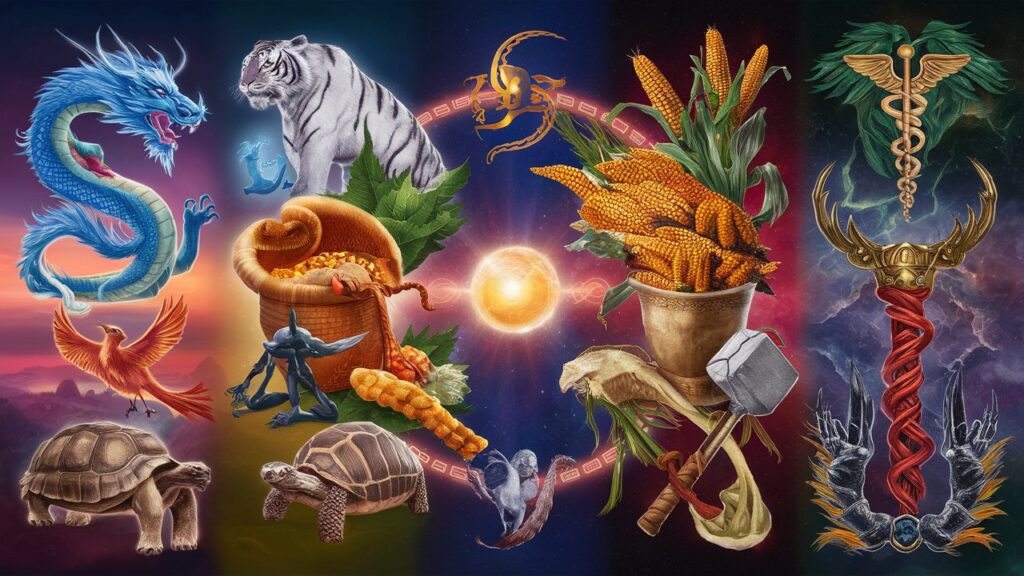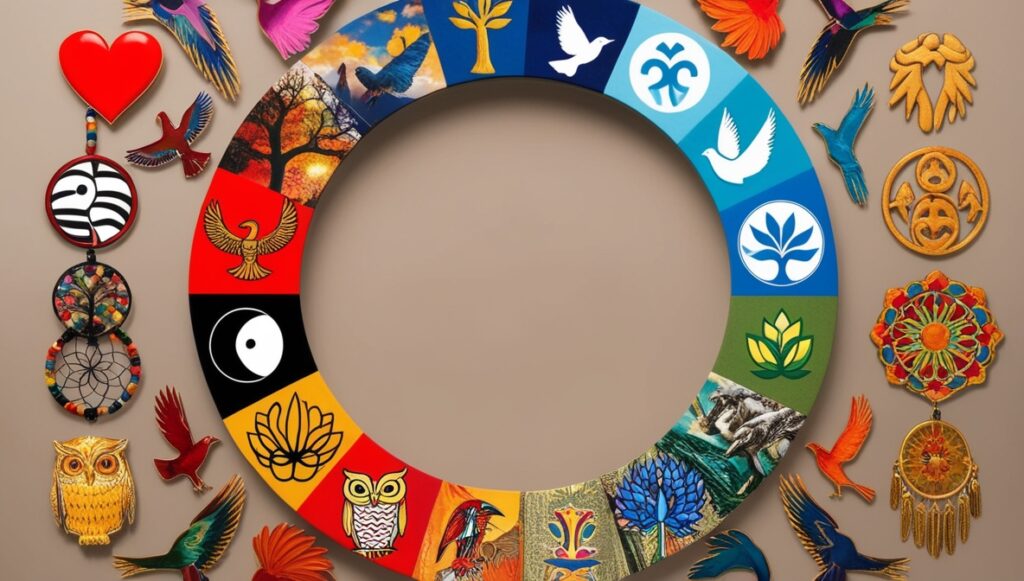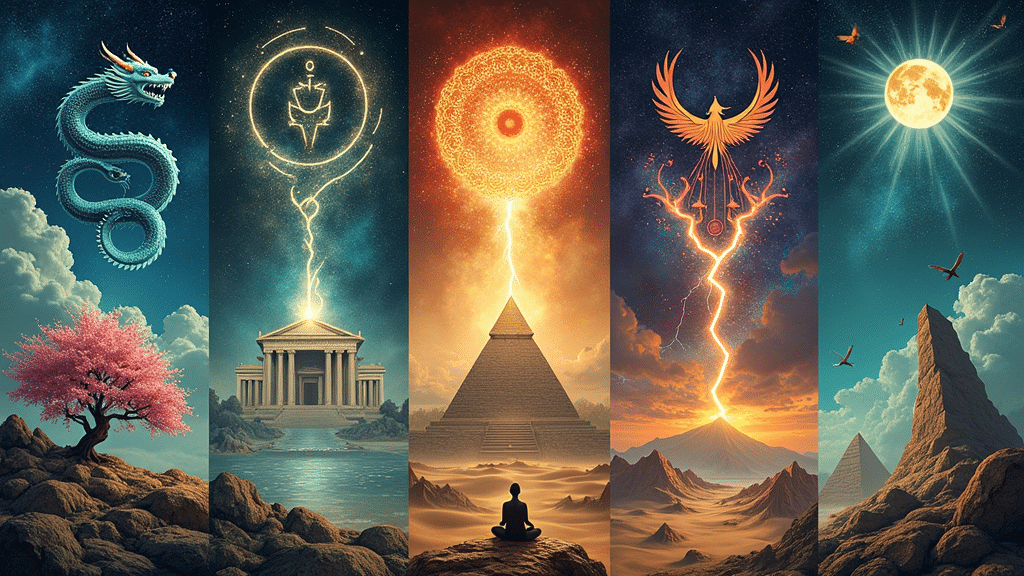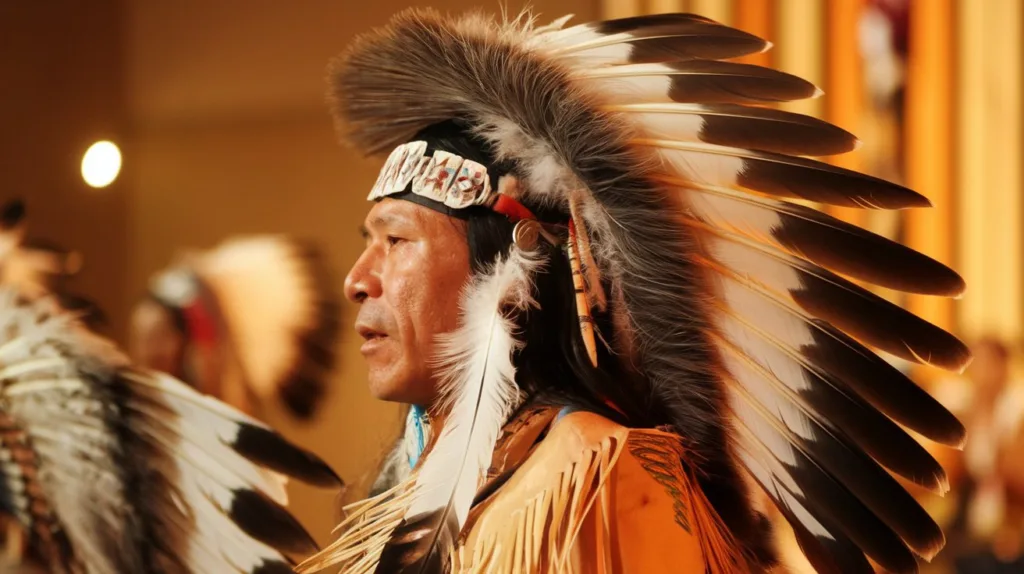Mythology has always fascinated us, with its symbolic imagery and profound meanings that transcend time. From ancient civilizations to contemporary cultures, mythological symbols have held a sacred significance in shaping our beliefs and understanding the world around us. In this article, we will embark on a journey to explore the captivating world of mythological symbols and unravel their ancient wisdom.
Key Takeaways
- Mythological symbols hold deep cultural significance and provide insight into the beliefs of our ancestors.
- Chinese mythological symbols, such as the Four Symbols, represent different celestial sections and seasons.
- Greek and Roman mythological symbols, like the Cornucopia and Caduceus, symbolize abundance and balance.
- Norse mythological symbols, including Thor’s Hammer and Yggdrasil, portray strength and interconnectedness.
- Exploring mythological symbols helps us appreciate the diversity and richness of global cultures.
Chinese Mythological Symbols
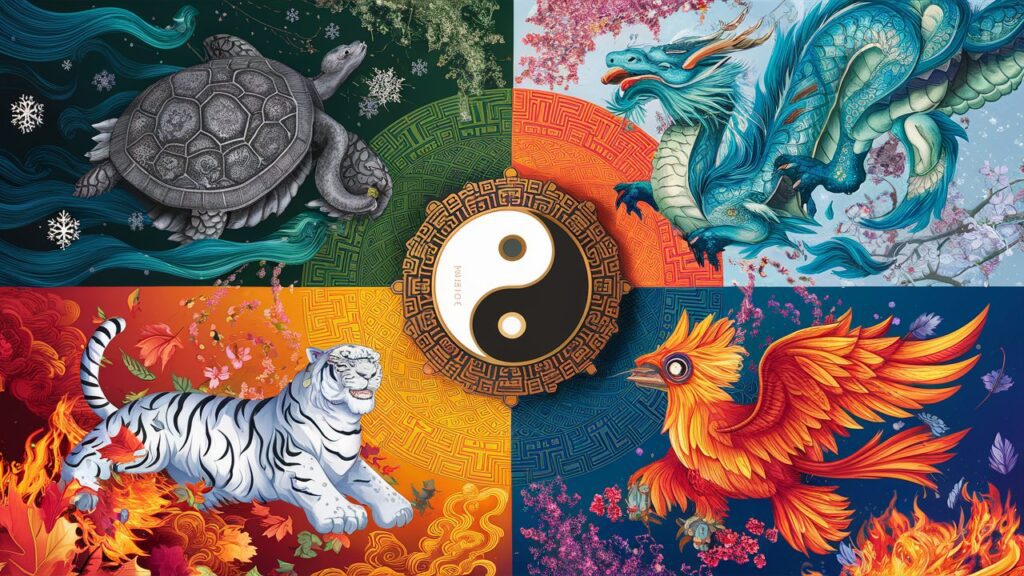

Chinese mythology is replete with captivating symbols that hold deep cultural significance. One of the most prominent sets of symbols is known as the Four Symbols, representing different sections of the sky with astronomical significance. Let’s explore these fascinating mythological symbols and their meanings.
Azure Dragon
The Azure Dragon, also known as the Blue Dragon or Qing Long, symbolizes the East and the spring season in Chinese mythology. It is associated with luck, prosperity, and justice. As a celestial guardian, the Azure Dragon brings good fortune and ensures balance and harmony in life. Its powerful presence is believed to guide and protect those who embrace its symbolism.
White Tiger
The White Tiger, known as Bai Hu, is another prominent symbol in Chinese mythology, representing the West and the autumn season. It is considered a protector and a symbol of strength and courage. The White Tiger’s presence signifies the ability to overcome obstacles and navigate through challenges with determination. It is revered for its strong energy and fierce nature.
Black Tortoise
The Black Tortoise, also called Xuan Wu, symbolizes the North and the winter season. It is associated with wisdom, longevity, and protection. The Black Tortoise is believed to possess profound knowledge and bring guidance to those who seek it. Its representation of endurance and perseverance makes it an emblem of strength in the face of adversity.
Vermillion Bird
The Vermillion Bird, also known as Zhu Que, corresponds to the South and the summer season. It is a symbol of good luck, prosperity, and transformation. The Vermillion Bird is associated with fire, passion, and rebirth. Its symbolism encourages embracing change, taking risks, and pursuing one’s desires with confidence and vitality.
These mythological symbols from Chinese culture offer a glimpse into the wisdom of ancient beliefs and provide inspiration for navigating life’s journey. By understanding their meanings, we can tap into the profound insights of our ancestors and connect with the timeless wisdom they hold.
| Symbol | Representation | Meaning |
|---|---|---|
| Azure Dragon | East and spring | Luck, prosperity, justice |
| White Tiger | West and autumn | Protection, strength, courage |
| Black Tortoise | North and winter | Wisdom, longevity, endurance |
| Vermillion Bird | South and summer | Good luck, prosperity, transformation |
Greek/Roman Mythological Symbols
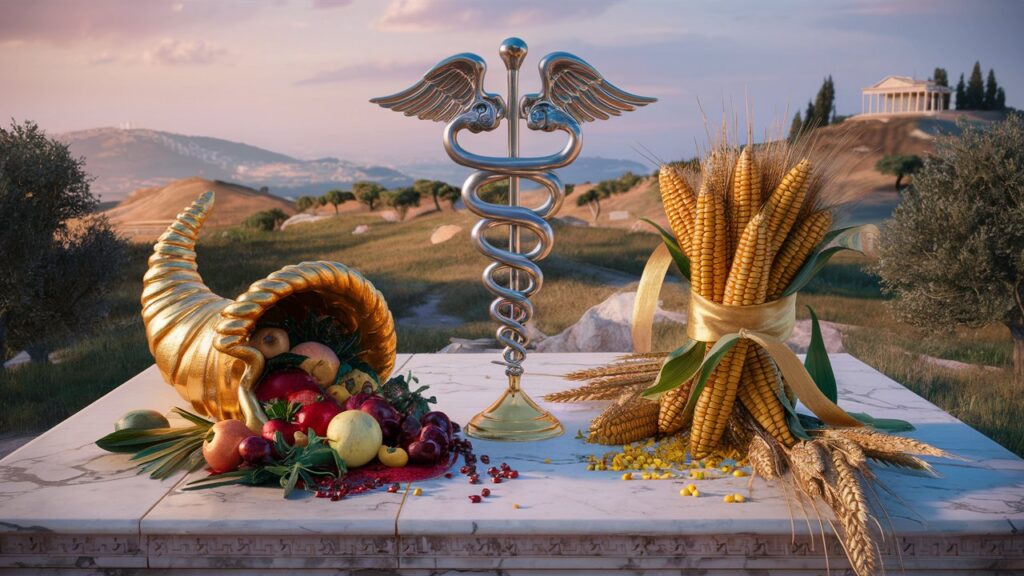

The world of Greek and Roman mythology is filled with captivating symbols that hold deep cultural significance. These symbols offer a glimpse into the ancient beliefs and values of these civilizations. Let’s explore some of the most notable Greek/Roman mythological symbols:
The Cornucopia
The Cornucopia, also known as the horn of plenty, is a symbol of abundance and the cyclical nature of the universe. In Greek mythology, it was believed to be a horn from the goat Amalthea, which was said to provide an endless supply of nourishment. The Cornucopia represents the idea that there is always enough for everyone and that the world is filled with blessings.
The Caduceus
The Caduceus is a staff with two fighting serpents wrapped around it, often associated with the Greek god Hermes and the Roman god Mercury. This symbol symbolizes equilibrium, harmony, and good conduct. It is also frequently used as a symbol of medicine and healing, representing the balance between disease and health.
Ears of Corn
Ears of Corn hold great significance in Greek mythology, particularly to the goddess Demeter, who was associated with agriculture, fertility, and abundance. These symbols represent the bountiful harvest and the prosperity that comes from a fruitful land. They serve as a reminder of the importance of nurturing and sustaining nature’s gifts.
| Symbol | Meaning |
|---|---|
| Cornucopia | Abundance and cyclical nature of the universe |
| Caduceus | Equilibrium, good conduct, and healing |
| Ears of Corn | Fertility, abundance, and nurturing nature’s gifts |
These Greek/Roman mythological symbols continue to inspire and hold significance in our modern world. They remind us of the importance of balance, abundance, and the interconnectedness of all things. Exploring these symbols allows us to tap into the wisdom of our ancestors and gain a deeper understanding of ourselves and our place in the world.
Read More : Cultural Symbols and Their Significance
Norse Mythological Symbols
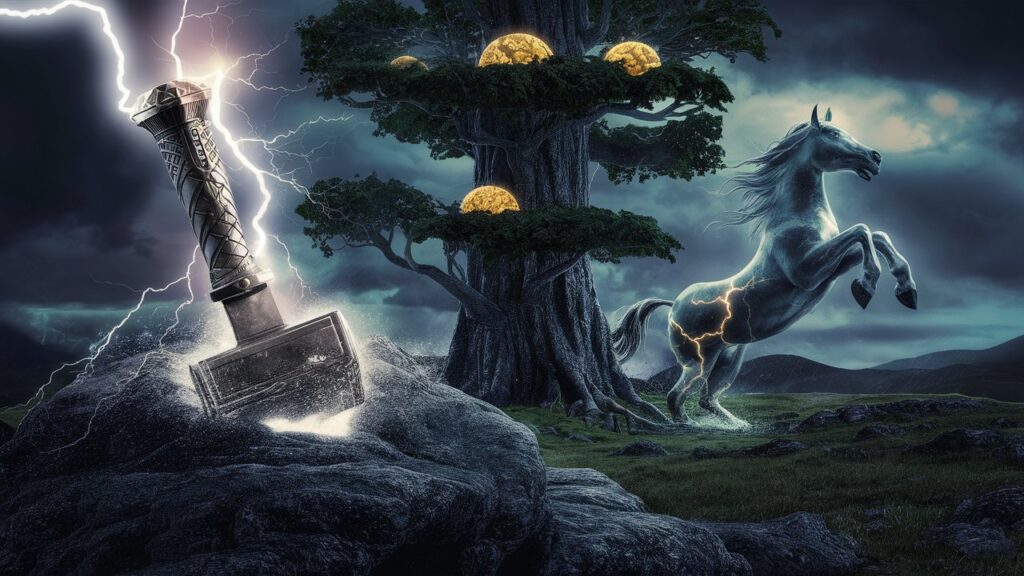

Explore the captivating world of Norse mythology and its powerful symbols that continue to inspire and resonate with us today.
One of the most iconic symbols is Thor’s Hammer, known as Mjolnir. This mighty weapon represents not only Thor’s strength and prowess but also serves as a symbol of protection and consecration. Its ability to summon thunder and lightning embodies the raw power of nature, reminding us of our own inner strength.
Another significant symbol is Yggdrasil, the mythological ash tree that stands at the center of the Norse cosmos. Yggdrasil connects the Nine Worlds, serving as a reminder of the interconnectedness of all existence. It symbolizes the eternal cycle of life, death, and rebirth, reminding us of the constant flux and change that shape our own journeys.
Lastly, let’s delve into the enigmatic Sleipnir, Odin’s eight-legged horse. As the embodiment of the shamanic journey and the unity of different realms, Sleipnir represents the quest for knowledge and spiritual growth. It encourages us to explore new realms of consciousness and embrace the depths of our own transformative potential.
These Norse mythological symbols carry profound meaning and offer timeless wisdom. They invite us to connect with ancient Norse beliefs and tap into the power of myth, reminding us of the rich tapestry of human existence.
FAQ
What is the significance of studying mythological symbols?
Studying mythological symbols allows us to delve into the wisdom of our ancestors and understand the deeper meanings behind ancient beliefs.
What are the Four Symbols in Chinese mythology?
The Four Symbols in Chinese mythology represent different sections of the sky with astronomical significance.
What does the Azure Dragon symbolize in Chinese mythology?
The Azure Dragon symbolizes the East and the spring season, bringing good fortune and justice.
What is the significance of the White Tiger in Chinese mythology?
The White Tiger is associated with the West and the autumn season, and is considered a protector.
What does the Black Tortoise symbolize in Chinese mythology?
The Black Tortoise represents the North and the winter season, symbolizing wisdom and longevity.
What does the Vermillion Bird represent in Chinese mythology?
The Vermillion Bird corresponds to the South and the summer season, symbolizing good luck.
What do the Cornucopia symbolize in Greek and Roman mythology?
The Cornucopia, also known as the horn of plenty, signifies abundance and the cyclical nature of the universe.
What does the Caduceus symbolize in Greek and Roman mythology?
The Caduceus, a staff with two fighting serpents wrapped around it, symbolizes equilibrium and good conduct.
What is the significance of Ears of Corn in Greek mythology?
Ears of Corn are sacred to the Greek goddess Demeter and represent fertility and abundance.
What does Thor’s Hammer represent in Norse mythology?
Thor’s Hammer, known as Mjolnir, represents strength, protection, and consecration.
What does Yggdrasil symbolize in Norse mythology?
Yggdrasil, the mythological ash tree, holds together the Nine Worlds and symbolizes the interconnectedness of all existence.
What does Sleipnir represent in Norse mythology?
Sleipnir, an eight-legged horse ridden by Odin, embodies the shamanic journey and the unity of different realms.


